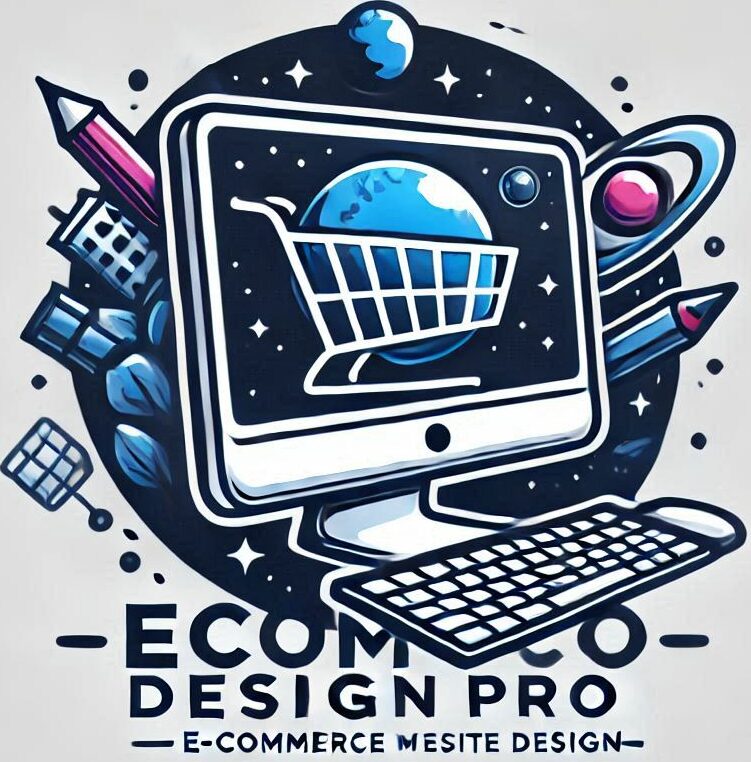
Time-based triggers drive action. They push customers to decide now instead of later(an example of urgency techniques), and that shift can lift sales fast.
Black Friday’s nearly $9 billion in online sales shows how concentrated, time-pressured events mobilize buyers at scale. This article pairs simple psychology with real-world marketing examples from Amazon, ASOS, Booking.com, OnePlus, Etsy and others.
We’ll explain clear, honest ways to create a helpful sense of now that increases conversions without hurting trust. Overuse or fake claims damage credibility, so the aim is ethical, occasional offers that respect customers.
Expect practical insights on scarcity signals, time-based nudges, and channel-specific execution. The piece follows a step-by-step structure so teams can prioritize where to start and how to layer tactics for compounding results.
Key Takeaways
- Time-limited offers can boost revenue when used honestly.
- Pair psychology with clear value to avoid harming trust.
- Short, action-forward copy helps customers act quickly.
- Align fast action with smooth user experience.
- Follow a step-by-step plan to scale results responsibly.
Why Urgency Works Now: Psychology, FOMO, and User Experience
Simple time cues change how people prioritize choices, nudging them toward faster decisions on your website.
The mere urgency effect and loss aversion driving fast action
Behavioral research shows the mere urgency effect: labeling something as time-sensitive pushes people to act sooner, even if the item is not the top priority.
Loss aversion compounds this. People feel the pain of losing out more than the pleasure of gaining, so framing offers around what could be lost sharpens motivation.
Balancing urgency with a frictionless customer experience
FOMO works when it signals real activity—like recent purchases or limited shipping windows—but too many pop-ups or flashing timers create friction.
- Place cues where they help decisions: product pages, cart, and checkout.
- Test formats and placements to avoid cognitive overload.
- Document a clear strategy and process so urgency supports rather than disrupts the buy flow.
Bottom line: let psychology inform design, but prioritize customer experience so urgency speeds action without eroding trust.
Urgency techniques grounded in scarcity signals
Real-time stock cues turn vague interest into immediate purchases on busy websites.
Show low stock levels on product pages only when inventory is truly limited. A clear “Only 3 left” message nudges people to buy and reduces cart abandonment. Accuracy matters—sync counters with actual stock to protect trust.

Display out-of-stock items selectively
Listing some sold-out items on category pages signals popularity and can drive demand for nearby alternatives. Use this sparingly to avoid frustrating shoppers.
Surface price-scarcity cues
Travel and retail sites can show “Only two rooms at this price” to tie value to scarcity. Price-linked messages help shoppers weigh the cost of waiting versus acting now.
Real-world examples and quick tactics
Amazon highlights limited quantities and deal meters to inform shoppers. Booking.com pairs “In High Demand!” banners with recent booking counts to add momentum.
- Display stock messages when levels fall below a tested threshold (e.g., 5 units).
- Extend stock cues into the cart to reduce abandonment.
- Keep mobile copy concise and unobtrusive for smooth checkout flow.
- Log results by product type—scarcity works differently by price and category.
Bottom line:use honest scarcity signals to increase conversions while preserving long-term credibility.
Time-based tactics that nudge customers to purchase today
A visible countdown tied to shipping or sale end times gives shoppers a concrete reason to finish checkout now.

Countdown timers for same-day shipping and sale deadlines
Show real deadlines. Neuroscience Marketing found a 9% revenue lift when a next-day delivery countdown was added.
Place timers near the add-to-cart button and shipping details so the value (faster delivery) is obvious.
Limited-time offers without exact end-time to reduce cart abandonment
Not every promotion needs an exact clock. Vague end-times can discourage procrastination when re-engagement is weak.
Example: say “limited time” on a banner and follow up via email instead of a hard deadline that encourages delay.
Cart holds and expirations to prevent wishlist behavior
Friendly holds convert browsers into buyers. ASOS holds items for 60 minutes with reassuring copy: “We’ll hold it for an hour!”
Use clear labels and avoid pop-ups. A calm, embedded message reduces friction and keeps the cart focused on conversion.
“Wheelership’s same-day timer that disappears after cutoff keeps messaging honest and prevents confusion later in the day.”
| Use case | Action | Expected lift | Best placement |
|---|---|---|---|
| Same-day shipping | Countdown near checkout | ~9% revenue (reported) | Product page, cart |
| Soft sales | Non-specific end-time banners | Lower abandonment | Homepage, product listings |
| Cart holds | 60-minute friendly notice | Higher cart-to-purchase rate | Cart summary |
- Keep countdowns embedded, not as pop-ups.
- Hide timers after cutoff like Wheelership to preserve trust.
- Validate mobile legibility to protect conversion and rate metrics.
Channel-driven approaches: SMS, email, and on-site messaging
Mixing SMS, email, and on-site chat gives brands a simple way to turn interest into purchases. Each channel has a different strength for timing and personalization.

SMS works for launch alerts. Short copy with a branded link boosts trust and clicks — branded links can drive ~39% more clicks. Response rates average 45% and open rates near 90%, so time texts to sale starts or shipping cutoffs to prompt immediate action.
Email still leads as a primary contact: about 65% of consumers use email to interact with brands. Use clear subject lines and one direct CTA that lands customers on the sale page or featured collection.
Live chat and chatbots personalize offers, answer blockers, and capture opt-ins for retargeting. They help on the website by surfacing timely deals and recovering abandoned carts.
- Launch sales via SMS with concise, value-first copy and branded short links.
- Segment sends by past behavior to keep messages relevant and avoid fatigue.
- Layer chat to answer questions and collect emails for follow-up.
- Equip your company with integrated tools so timing and personalization feel seamless.
- Test subject lines, CTAs, and send times to improve conversions.
Tip: coordinate a simple calendar across teams so messages reinforce each other without overlap.
Social proof and real-time demand to create a sense of urgency

Live behavior signals like viewer counts and recent purchases give shoppers quick social validation. Showing that other people are looking at a product or just bought it reduces doubt and speeds decisions.
Show how many people are viewing or have bought recently
Small, honest counters—for example, “12 viewing” or “3 bought in the last hour”—offer concrete proof of demand. These notices work best near CTAs where they calm anxiety and support conversions.
Case examples: Etsy interest counters, Basecamp sign-up momentum
Etsy displays interest counts on listings to signal real demand and nudge faster buys. Basecamp pairs recent sign-up numbers with testimonials to create momentum and social trust.
A 2013 study found social recommendations increased revenue by about 13%.
- Place lightweight notices near the add-to-cart or signup button.
- Combine scarcity with live demand like “12 viewing, only 3 left” to amplify impact responsibly.
- Keep counts accurate and product-specific to protect credibility and conversion rate.
Ethical urgency: vocabulary, CTAs, and avoiding manipulative tactics
Framing offers around real benefits, not panic, leads customers to act with confidence. Use clear vocabulary that explains value and timing so customers understand what changes if they act now.
Use honest scarcity; avoid perpetual sales and fake counters
Commit to truthful scarcity tied to real inventory or service limits. Fake counters and endless sales erode confidence and harm long-term sales.
Action-focused copy that highlights value without panic
Write CTAs that state benefit: “Get next-day delivery” or “Reserve lunch for 12:30.” Keep tone calm and helpful to guide action instead of pressuring customers.
Case examples: OnePlus invite-only buzz, Sushi Shop lunch pre-orders
OnePlus used invite-only access to create legitimate exclusivity and big demand. Sushi Shop tied a simple pre-order banner to on-time delivery and saw higher cart confirmations.
| Company | Approach | Result |
|---|---|---|
| OnePlus | Invite-only launches (real scarcity) | ~1M sales; 25M site visits |
| Sushi Shop | Lunchtime pre-order banner (service-tied) | +3% cart confirmations |
| Best practice | Sync data with content and tools | Preserves trust, boosts repeat business |
- Document a written strategy so your team applies scarcity consistently.
- Use tools that keep inventory and timing accurate.
- Measure repeat purchases to ensure the approach supports business health.
Conclusion
When you tie a visible deadline to a real benefit, customers see a practical reason to complete checkout today.
Blend psychology with real scarcity and clean timing: start with shipping cutoffs, then add stock and price cues where they help decisions. Prioritize a few high-impact tactics — countdowns, cart holds, and social proof — so your team executes consistently and measures lift.
Balance sale messages across email and SMS with short CTAs and branded links. Keep indicators honest; accurate stock and clear timeframes protect trust and boost conversion.
Take action: map one or two tactics to your next campaign, measure conversion and repeat-purchase rates, and scale what increases conversions while improving customer experience.
FAQ
What is “Effective Urgency” and why does it help business growth?
Effective urgency is a set of marketing strategies that encourage faster customer action by highlighting limited availability, shorter time windows, or rising demand. When done honestly, it boosts conversion rates, reduces cart abandonment, and accelerates purchase decisions without harming brand trust.
How does user psychology like FOMO and loss aversion make urgency work now?
People tend to act to avoid missing out or losing value. Signals such as low stock notices or limited-time pricing tap into that behavior. Pairing these cues with a smooth checkout experience increases the chance customers follow through instead of delaying the purchase.
How do I balance urgency with a frictionless customer experience?
Keep purchase paths simple: clear CTAs, fast checkout, and transparent shipping or return rules. Avoid pop-ups that block actions and use friendly reminders rather than aggressive pressure. That balance maintains trust and improves long-term conversion and loyalty.
What scarcity signals work best for increasing conversions?
Concrete, truthful cues perform best: “Only 3 left,” limited-seat counts, and price-limited inventory like “rooms at this price.” These signals show real constraints and motivate quicker decisions when paired with relevant product details and social proof.
Can showing out-of-stock items actually increase demand?
Yes, selectively showing sold-out tags or waitlist options can create desirability and capture leads. Use this sparingly and offer alternatives or restock notifications to convert interest into future sales instead of frustrating shoppers.
How do time-based tactics like countdown timers affect buyer behavior?
Visible timers create urgency by making deadlines tangible. Use them for same-day shipping cutoffs, limited promotions, or flash sales. Avoid misleading end-times and ensure timers reflect real availability to protect reputation and reduce complaints.
Is it better to display exact end times or vague limited-time offers?
Exact end times work well for promotions tied to events or logistics. Vague limits can reduce last-minute cart abandonment when scarcity is the goal, but they risk appearing manipulative. Choose the format that fits your offer and be honest about constraints.
How can cart holds or expirations reduce wishlist behavior?
Cart holds reserve inventory or special pricing for a limited window, nudging buyers to complete checkouts. Communicate the hold length clearly and provide simple checkout steps. This avoids losing potential sales to prolonged indecision.
Which channels are most effective for urgency-driven campaigns?
What should a launch SMS include to drive quick action?
Keep it concise and branded, include a clear CTA link, a brief benefit statement, and an explicit reason to act now—like a limited quantity or early-bird price. Respect opt-in rules and limit frequency to maintain trust.
How can social proof create a stronger sense of demand?
Showing recent purchases, current viewers, or product ratings reassures shoppers that others find value in the item. Real-time counters and recent sale notifications create momentum and reduce hesitation when paired with honest scarcity signals.
Are there ethical guidelines for using scarcity and time pressure?
Yes. Always use truthful scarcity, avoid fake timers or phantom stock counts, and never fabricate demand. Focus messaging on value and benefits, not fear. Ethical urgency preserves brand reputation and supports sustainable sales growth.
What vocabulary and CTA styles are best to avoid sounding manipulative?
Use clear, action-focused phrases like “Reserve your spot,” “Claim this price,” or “Order for same-day dispatch.” Avoid alarmist language or repeated panic cues. Prioritize transparency about stock, deadlines, and returns to keep customers comfortable.
Can you give real-world examples of effective urgency in use?
Major e-commerce sites like Amazon show limited quantities and fast-moving labels. Booking platforms such as Booking.com use “In high demand” and countdowns for special rates. Brands like ASOS use cart hold messaging to prompt checkouts. These examples combine honest scarcity with simple checkout flows.
How do I measure whether urgency tactics improve conversion rate?
Track metrics like conversion rate, cart abandonment, average order value, and time-to-purchase before and after running tests. A/B testing different messages, timer styles, and channels will reveal which approaches lift sales without harming customer experience.
What common pitfalls should businesses avoid when creating a sense of urgency?
Avoid fake scarcity, excessive frequency, and unclear terms that frustrate buyers. Poorly implemented urgency can erode trust and increase returns. Test small, be transparent, and align messaging with real inventory and fulfillment capabilities.



